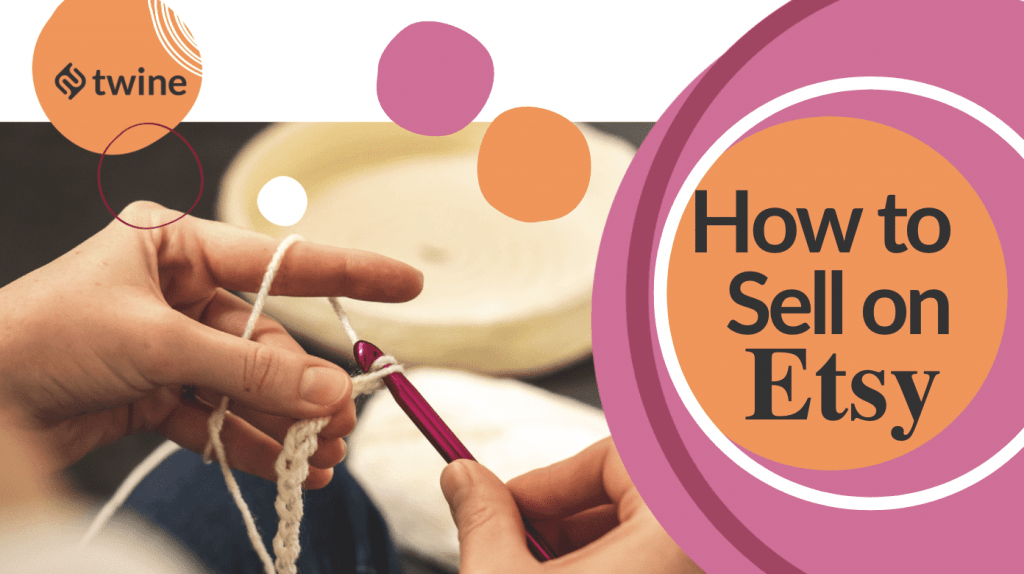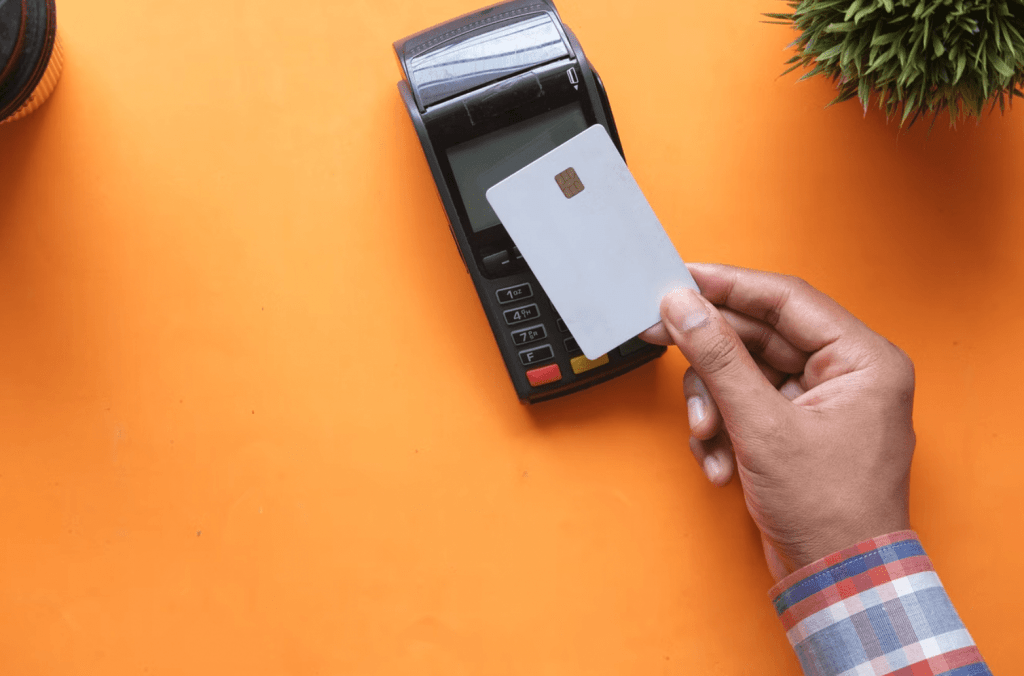
For more Finance Tools, check out the Freelancer Toolkit…
Many entrepreneurs have decided to skip the headaches and high cost of opening a retail business in favor of an online store using Etsy. Opening an Etsy shop could be smart thanks to its affordability, wide market reach, and many other benefits. But what if you’ve never used this marketplace or don’t know how to sell on Etsy?
If so, you’ve come to the right place. This article will discuss how to open your personal Etsy shop in six simple steps.
Why Start an Etsy Shop?

There are many reasons why you might want to start an Etsy shop for your business. For example, you:
- Gain the ability to make at least some side income, even if you don’t make enough to quit your day job.
- Get to share your art or personal products with the world.
- Can potentially make enough money to quit your other job one day and become an Etsy vendor full-time.
- Can take charge of your finances more directly.
- Will build a personal brand that may serve you in other industries or throughout your life. Or, a brand designer can help take care of this for you…
You can start an Etsy shop anytime you like and for any reason. But if you want your Etsy shop to be successful, you’ll need to start it the right way and without skipping certain key steps.
So, how should you start? It all begins with an idea. Technically, this is Step 0 – you don’t want to skip this until you have your core shop idea down!
Think about what you’ll sell on Etsy and what you like to make or provide. Although Etsy could be a way to achieve financial independence, it might also drain you of finances and time. Why?
Well, Etsy is filled to the brim with other online stores. If you don’t distinguish yourself from the competition, or if you don’t dominate a particular niche, you probably won’t make enough to justify having an online store in the first place.
So, come up with an idea for your Etsy store. Decide what you’ll sell with Etsy, the general aesthetic or theme for your store, and what your industry or niche will be. If you choose to sell in a crowded niche, like homemade jewelry, ensure that your product has a notably unique aesthetic or style that distinguishes you from the competition.
Step #1 – Make a New Etsy Account

Once you have your idea, it’s time to create an Etsy account. To do this, simply visit the Etsy site and click “Sell on Etsy” and “Open your Etsy shop.” Then, enter your email address, click “Continue,” and enter your first name and password.
Alternatively, you can sign up using your Facebook or Google account if you want to connect all of those accounts. It could be wise depending on your business objectives.
Once you’re finished making a new Etsy account, click “Open your Etsy Shop” again. Then click on the button labeled “Shop Manager.”
Step #2 – Create a Dazzling Digital Storefront

The “Shop Manager” control allows you to set up your store and personalize its various details. The first thing you should do is create a beautiful storefront. While all Etsy shops will look roughly similar, you can and should make your store look as unique and interesting as possible.
Specifically, you should:
- Set up a shop background. You can upload unique photos or videos if you like or use one of Etsy’s built-in backgrounds. Coming up with a custom background and banner is ideal, as it’ll make your store more unique. Alternatively, consider hiring a freelancer to create a great background for your store.
- Customize your store by adding a personal picture, bio, and anything else that may distinguish your online shop from others in your niche.
- Set your shop policies. These are especially important once you start selling your goods as they will determine what you are on the hook for regarding shipping, exchanges, returns, custom items, etc.
- Set your shipping policies and profiles. For example, will you offer free shipping, or will shipping be a flat fee for each customer?
- Set where you will ship to. This will impact whether you do business internationally or locally in your state or country.
Setting up all of these details early is important for both you and your customers. No matter how good your products are, you’ll eventually have someone request an exchange or return – having these policies set in stone beforehand will make things easier for you.
Step #3A – Set Up Etsy Shop Preferences…

The next step is to navigate to “Shop Preferences.” Here, you can enter the preferred country, currency, and language for your store. Currency is very important, especially if you plan to do international business. Don’t accept currencies that you aren’t able to exchange online easily.
You should also mark how long you plan to sell on Etsy or spend time at your online business (i.e., full-time or part-time). This information is important for your customers but also for Etsy.
Once you’re finished setting up all your preferences, click “Save and Continue” at the bottom of the page.
Step #3B – … and Add Two-Factor Authentication
As an added tip, you should set up two-factor authentication for additional security. Two-factor authentication requires two different means of identity verification before someone can access your Etsy store account. This prevents someone who knows your password from stealing your financial information or destroying your store.
In practice, two-factor authentication means getting an extra verification code through your phone or a similar device. Practicing good digital security is an excellent habit to have as an online seller.
Step #4 – Come Up With a Name for Your Etsy Shop

Hopefully, you already have a few ideas for your Etsy shop or business name, as you’ll need to enter it and check its availability on the Etsy interface at this step.
Etsy gives you up to 20 characters for your store name, but you can’t use numbers, spaces, or accented letters. Spend some time thinking about the name of your store and try to find something that relates to your industry or products and that is distinct enough from your competition.
Although you can always change the name of your shop if necessary, it’s best to stick with the original name you choose. People will eventually associate your brand name with your products, and it’s easier to build a long-term audience if you have one name and keep it for years to come.
Once you input the name and find it available, click “Save and Continue” at the bottom of the page to move on.
Step #5 – Add Products to Your Store

Now it’s time to add the products to your online store. Of course, you don’t have to have the products actually made yet. But you need to add the shop icons and listings to stock the page with real-world merchandise in the future.
To do this, click “Add a listing” each time you wish to add a new product. You should provide as much information about your products as possible, including images, names, descriptions, prices, and anything else that may entice a customer to buy that product.
Generally, the more information you provide, the greater the odds that someone will make a purchase, especially in the early months and years of your online business. You can preview a listing by clicking the same-named button. Then, click “Save and Continue” when you are ready to move on and have added all the initial listings.
Remember, you can add more listings later as you develop new products for your customers.
Step #6 – Set Up Payment Preferences and Billing

For your Etsy shop to be successful, you’ll need to set up payment preferences and billing controls. The next Etsy page will have you determine how you will get paid when you make a sale. Etsy lets you choose between a checking or savings account.
Pick which one you like, then enter the bank and contact information as marked on the page. Once you’re done, click “Save and Continue,” which will take you to a billing page.
The billing page is where you set up how you’ll pay fees to Etsy for using the platform and its tools. These include fees for shipping labels, ads, and more. Depending on your preferences, you can pay Etsy using a credit or debit card, bank account, and other methods.
Once you’re finished with this page, you’re ready. Click “Open your Shop” at the bottom of the page, and your online Etsy store will be ready for business!
How Much Does It Cost to Sell on Etsy?

That depends on the Etsy account you have and a variety of other factors. When you make a new account with Etsy, you’ll automatically be signed up for Etsy Standard, which gives you a free set of customization tools to help you open your store ASAP.
Etsy offers a variety of other products for fees, including:
- Etsy Ads, which allow you to advertise on the Etsy platform to people searching for your products.
- Pattern, which is a platform to help you build a website outside of the Etsy marketplace.
- Etsy shipping labels.
Instead of paying for these things à la carte, you can instead sign up for Etsy Plus, an annual subscription plan that costs $10 per month. It includes the above tools plus store credits so you can set up ads on Etsy and more. Etsy Plus is worthwhile if you want your shop to be as successful as possible.
Etsy also has listing fees – these are $.20 per item you list for sale or renewal. Each listing expires after four months, which means every product in your store catalog has to be renewed at least once every four months. Keep this in mind when predicting cash flow and deciding how many products to list in your store.
Lastly, Etsy also has transaction fees and payment processing fees. Transaction fees are charged at a flat rate of 5% for each listing’s display price in addition to 5% of total shipping charges. Etsy payment processing fees vary depending on the location of your bank and are usually 3% for US banks plus another $.25 per order.
Conclusion
As you can see, it’s easier than ever to sell on Etsy. You can make an online store, list your products, and start selling in a matter of hours or days.
With the right store branding and the right marketing, you’ll be well on your way to making it as a successful Etsy seller. Good luck!
Ready to hire? Our marketplace of over 410,000 diverse freelancers has the skills and expertise needed to skyrocket your business. From marketers to designers, copywriters to SEO experts – browse the talented bunch here!



